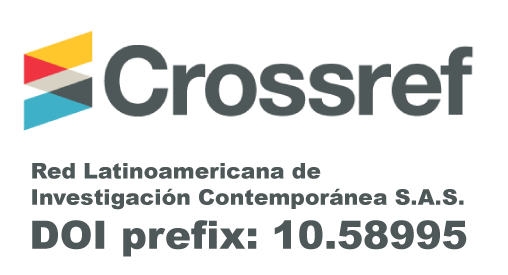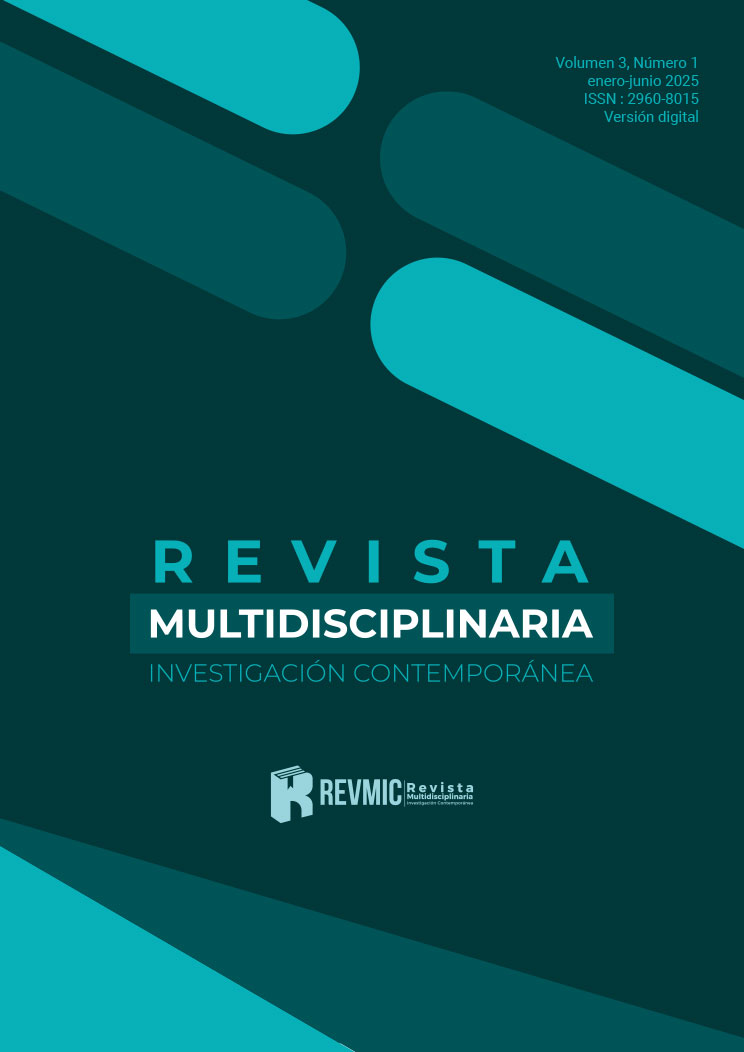Comparative analysis of the clinical performance of Bulk Fill and Fiber-reinforced resins: A systematic review in restorative dentistry
Abstract
Dental restorative materials are organic-mineral materials used in dental procedures. The use of Bulk Fill resins is associated with monobloc techniques, reducing clinical time. On the other hand, fibre-reinforced resins have good mechanical properties such as higher resistance to occlusal forces due to their mechanical properties. Materials and methods: A descriptive research with a quantitative approach was carried out, following the PRISMA statement, resulting in an initial 245 documents, inclusion and exclusion criteria were applied, 13 documents were selected to be included for the study. Results: Examining the success rate, clinical performance and difficulties in application, the results showed that Bulk Fill resin restorations have a success rate of more than 95% between 6 months and 5 years, its complications included lack of adaptation, marginal staining, microleakage, etc. On the other hand, reinforced resins show a high success rate, fatigue resistance of 87%, identifying non-catastrophic fractures as complications. Conclusions: The two resin systems have presented good clinical performance so their use is recommended, limiting the research the lack of literature on fiber-reinforced resins for being a new element in restorative dentistry
Downloads
References
- Johanna Daniela Gavilanes-Ortega, Jennifer Valeria Castro-Vaca. -ResistenciaALaCompresionDeLaResinaBulkEnComparacio-8482991. 2022;7(4):900–8. https://doi.org/10.23857/pc.v7i4.3864
- Acurio P, Falcón G, Casas L, Montoya P. Comparación de la resistencia compresiva de resinas convencionales vs resinas tipo Bulk fill. Odontol Vital. 2017;(27):69–77. DOI: https://doi.org/10.59334/ROV.v2i27.214
- Barutcigil Ç, Barutcigil K, Özarslan MM, Dündar A, Yilmaz B. Color of bulk‐fill composite resin restorative materials. J Esthet Restor Dent. 2018 Mar;30(2):E3–8. https://doi.org/10.1111/jerd.12340 DOI: https://doi.org/10.1111/jerd.12340
- Ojeda GD, Tisi JP, Urzúa I. Clinical Alternatives for the Use of Compactable and Flowable Bulk-Fill Composites: A Step-by-Step Case Report. Odovtos - Int J Dent Sci. 2021;23(1):31–42. https://doi.org/10.15517/IJDS.V0I0.36150 DOI: https://doi.org/10.15517/ijds.v0i0.36150
- Borrego A. La resina Bulk Fill como material innovador. Revisión bibliográfica. Rev Dilemas Contemp Educ Política y Valores. 2021;10:6.
- Chesterman J, Jowett A, Gallacher A, Nixon P. Bulk-fill resin-based composite restorative materials: A review. Br Dent J. 2017;222(5):337–44. https://doi.org/10.1038/sj.bdj.2017.214 DOI: https://doi.org/10.1038/sj.bdj.2017.214
- Vasconcelos Monteiro DDS, MS, PhD Studen R, Cavalcanti Taguchi DDS, MS, PhD Student CM, Gondo Machado DDS, MS, PhD R, Batalha Silva DDS, MS, PhD S, Karina Bernardon DDS, MS, PhD J, Monteiro Junior DDS, MS, PhD S. Bulk-Fill Composite Restorations Step-by-Step Description of Clinical Restorative Techniques Case Reports. Odovtos - Int J Dent Sci. 2019 Mar;21(2):23–31. https://doi.org/10.15517/ijds.v21i2.36681 DOI: https://doi.org/10.15517/ijds.v21i2.36681
- Silva G, Marto CM, Amaro I, Coelho A, Sousa J, Ferreira MM, et al. Bulk-Fill Resins versus Conventional Resins: An Umbrella Review. Polymers (Basel). 2023;15(12):0–17. https://doi.org/10.3390/polym15122613 DOI: https://doi.org/10.3390/polym15122613
- Zotti F, Falavigna E, Capocasale G, De Santis D, Albanese M. Microleakage of Direct Restorations-Comparisonbetween Bulk-Fill and Traditional Composite Resins:Systematic Review and Meta-Analysis. Eur J Dent. 2021;15(4):755–67. https://doi.org/10.1055/s-0041-1724155 DOI: https://doi.org/10.1055/s-0041-1724155
- Safwat EM, Khater AGA, Abd-Elsatar AG, Khater GA. Glass fiber-reinforced composites in dentistry. Bull Natl Res Cent. 2021 Nov;45(1):190. https://doi.org/10.1186/s42269-021-00650-7 DOI: https://doi.org/10.1186/s42269-021-00650-7
- Vallittu PK. An overview of development and status of fiber-reinforced composites as dental and medical biomaterials. Acta Biomater Odontol Scand. 2018;4(1):44–55. https://doi.org/10.1080/23337931.2018.1457445 DOI: https://doi.org/10.1080/23337931.2018.1457445
- Janani K, Khandelwal A, Palanivelu A. Fiber-reinforced composite in dentistry -A review. Drug Invent Today. 2020 Jun;13(6):1231–5.
- Kitchenham B. Guidelines for performing Systematic Literature Reviews in Software Engineering. Keele; 2007.
- Kitchenham B. Procedures for Performing Systematic Reviews. Keele; 2004.
- Moher D, Liberati A, Tetzlaff J, Altman DG, Altman D, Antes G, et al. Preferred reporting items for systematic reviews and meta-analyses: The PRISMA statement. PLoS Med. 2009;6(7):1–6. https://doi.org/10.1371/journal.pmed.1000097 DOI: https://doi.org/10.1371/journal.pmed.1000097
- Pardal-Refoyo JL, Pardal-Peláez B. Anotaciones Para Estructurar Una Revisión Sistemática. Rev ORL. 2020;11(2):155–60. https://doi.org/10.14201/orl.22882 DOI: https://doi.org/10.14201/orl.22882
- Cieplik F, Hiller KA, Buchalla W, Federlin M, Scholz KJ. Randomized clinical split-mouth study on a novel self-adhesive bulk-fill restorative vs. a conventional bulk-fill composite for restoration of class II cavities – results after three years. J Dent [Internet]. 2022;125(August):104275. https://doi.org/10.1016/j.jdent.2022.104275 DOI: https://doi.org/10.1016/j.jdent.2022.104275
- Durão M de A, de Andrade AKM, do Prado AM, Veloso SRM, Maciel LMT, Montes MAJR, et al. Thirty-six-month clinical evaluation of posterior high-viscosity bulk-fill resin composite restorations in a high caries incidence population: interim results of a randomized clinical trial. Clin Oral Investig. 2021;25(11):6219–37. https://doi.org/10.1007/s00784-021-03921-9 DOI: https://doi.org/10.1007/s00784-021-03921-9
- Salem MN, Hassanein OE, ElKassas DW, Shaalan OO. 12-months Clinical Evaluation of Fiber Reinforced Bulk Fill Resin Composite versus Incremental Packing of Nanohybrid Resin Composite in Restoration of Deep Proximal Lesions of Permanent Molars: A Randomized Controlled Trial. Acta Stomatol Croat. 2022;56(3):267–80. https://doi.org/10.15644/ASC56/3/5 DOI: https://doi.org/10.15644/asc56/3/5
- Balkaya H, Arslan S, Pala K. A randomized, prospective clinical study evaluating effectiveness of a bulk-fill composite resin, a conventional composite resin and a reinforced glass ionomer in class II cavities: One-year results. J Appl Oral Sci. 2019;27:1–12. https://doi.org/10.1590/1678-7757-2018-0678 DOI: https://doi.org/10.1590/1678-7757-2018-0678
- Feiz A, Sajedi M, Jafari N, Swift E. Evaluation of microleakage in Class II composite restorations: Bonded-base and bulk-fill techniques. Dent Res J (Isfahan). 2021;18(1):1–6. https://doi.org/10.4103/1735-3327.328757 DOI: https://doi.org/10.4103/1735-3327.328757
- Soares LM, Razaghy M, Magne P. Optimization of large MOD restorations: Composite resin inlays vs. short fiber-reinforced direct restorations. Dent Mater [Internet]. 2018;34(4):587–97. https://doi.org/10.1016/j.dental.2018.01.004 DOI: https://doi.org/10.1016/j.dental.2018.01.004
- Canali GD, Ignácio SA, Rached RN, Souza EM. One-year clinical evaluation of bulk-fill flowable vs. regular nanofilled composite in non-carious cervical lesions. Clin Oral Investig. 2019;23(2):889–97. https://doi.org/10.1007/s00784-018-2509-8 DOI: https://doi.org/10.1007/s00784-018-2509-8
- Schoilew K, Fazeli S, Felten A, Sekundo C, Wolff D, Frese C. Clinical evaluation of bulk-fill and universal nanocomposites in class II cavities: Five-year results of a randomized clinical split-mouth trial. J Dent [Internet]. 2023 Jan;128:104362. https://doi.org/10.1016/j.jdent.2022.104362 DOI: https://doi.org/10.1016/j.jdent.2022.104362
- Hoffmann L, Neuerer C, Heck K, Kunzelmann KH. Bulk-fill Composites Compared to a Nanohybrid Composite in Class-II Cavities - A Two-year Follow-Up Study. J Adhes Dent [Internet]. 2021 Oct 1;23(5):389–96. https://doi.org/10.3290/j.jad.b2000185
- De Almeida Durão M, De Andrade AKM, Da Silva Santos MDCM, Montes MAJR, De Melo Monteiro GQ, De Almeida Durão M. Clinical Performance of Bulk-Fill Resin Composite Restorations Using the United States Public Health Service and Federation Dentaire Internationale Criteria: A 12-Month Randomized Clinical Trial. Eur J Dent. 2021;15(2):179–92. https://doi.org/10.1055/s-0040-1718639 DOI: https://doi.org/10.1055/s-0040-1718639
- Harp YS, Montaser MA, Zaghloul NM. Flowable fiber-reinforced versus flowable bulk-fill resin composites: Degree of conversion and microtensile bond strength to dentin in high C-factor cavities. J Esthet Restor Dent [Internet]. 2022 Jun 11;34(4):699–706. https://doi.org/10.1111/jerd.12901 DOI: https://doi.org/10.1111/jerd.12901
- Tardem C, Albuquerque EG, De Souza Lopes L, Marins SS, Calazans FS, Poubel LA, et al. Clinical time and postoperative sensitivity after use of bulk-fill (syringe and capsule) vs. incremental filling composites: A randomized clinical trial. Braz Oral Res. 2019;33:1–13. https://doi.org/10.1590/1807-3107BOR-2019.VOL33.0089 DOI: https://doi.org/10.1590/1807-3107bor-2019.vol33.0089
- Magne P, Milani T. Short-fiber Reinforced MOD Restorations of Molars with Severely Undermined Cusps. J Adhes Dent [Internet]. 2023 Apr 24;25(1):99–106. https://doi.org/10.3290/j.jad.b4051477
Published 2025-04-29
Keywords
- Resina Bulk Fill,
- Resina forzada con fibra,
- desempeño clínico,
- Odontología Restaurativa
Issue
Section
Copyright (c) 2025 Los autores que publiquen en la revista Multidisciplinaria Investigación Contemporánea aceptan los siguientes términos: 1. Los autores mantienen sus derechos de autor (copyright) y otorgan a la revista Multidisciplinaria Investigación Contemporánea el derecho de la primera publicación de su trabajo, bajo una licencia Creative Commons Attribution 4.0. Esta licencia permite que terceros utilicen el contenido publicado, siempre que se mencione la autoría y la primera publicación en esta revista. 2. Los autores pueden establecer acuerdos adicionales para la distribución no exclusiva de la versión publicada de su artículo en otros lugares, como repositorios institucionales, siempre y cuando se indique claramente que el trabajo fue publicado por primera vez en esta revista. 3. Los autores conservan sus derechos de autor (copyright) y garantizan a la revista Multidisciplinaria Investigación Contemporánea el derecho a publicar el manuscrito a través de los canales que considere apropiados. 4. Se permite y se recomienda a los autores compartir su trabajo en línea (por ejemplo, en repositorios institucionales o páginas web personales), una vez que el manuscrito haya sido aceptado para su publicación. Esto puede conducir a intercambios productivos y a una mayor y más rápida citación del trabajo publicado.

This work is licensed under a Creative Commons Attribution 4.0 International License.




















